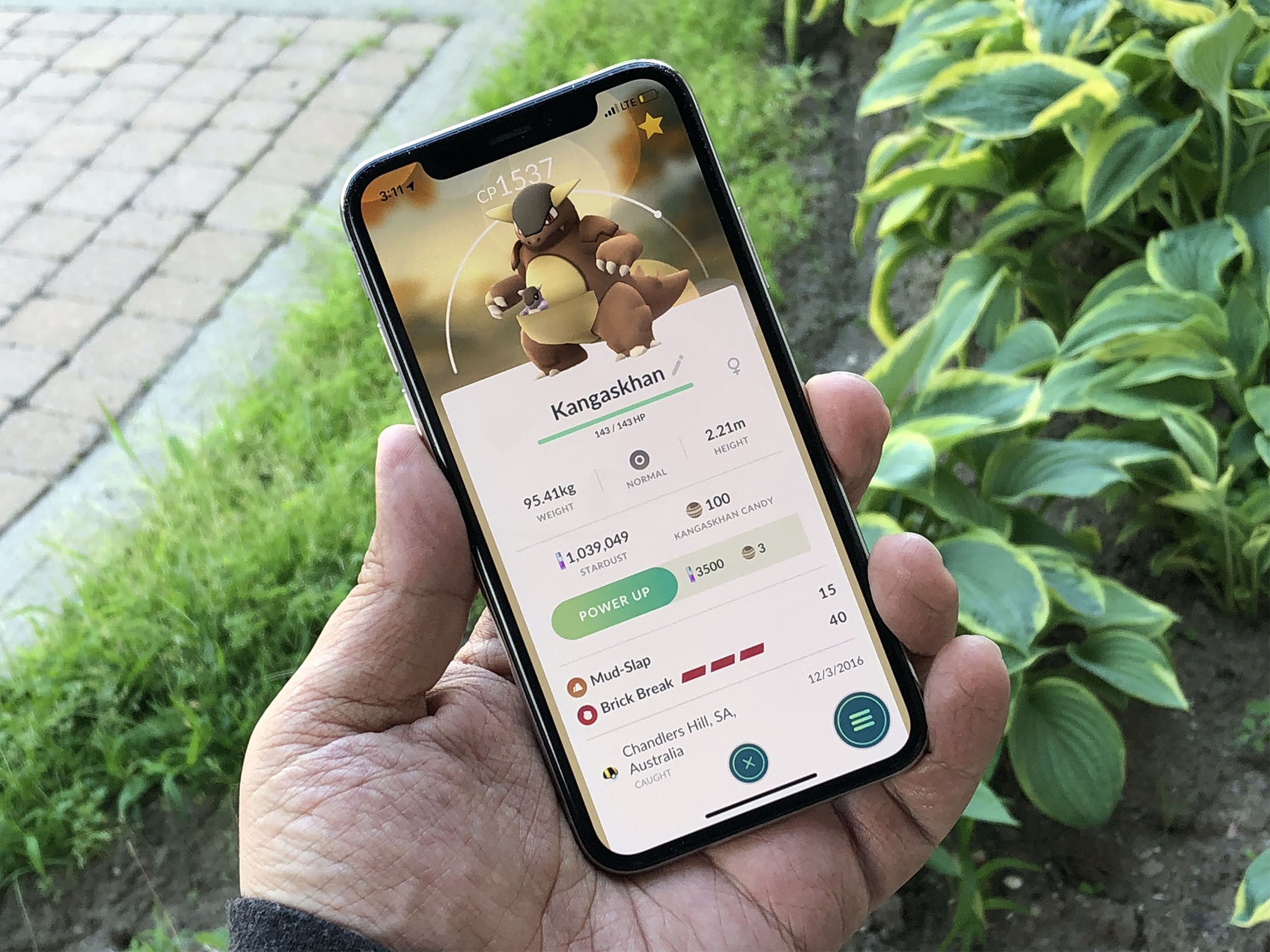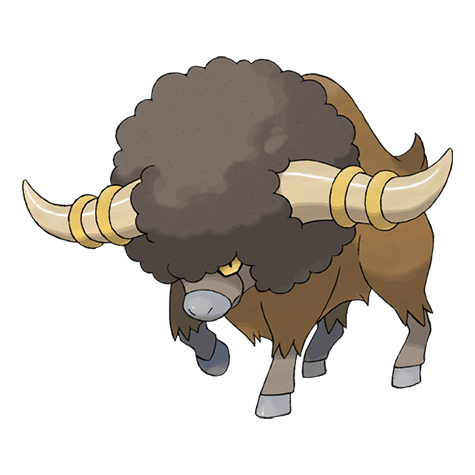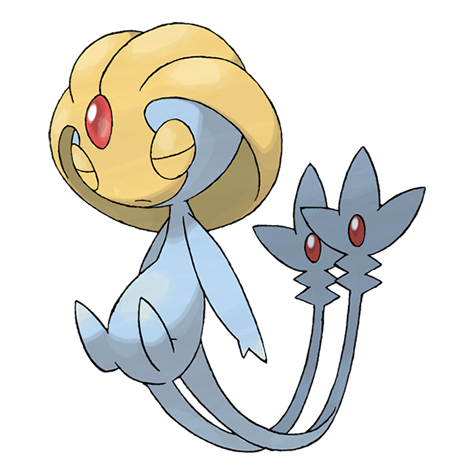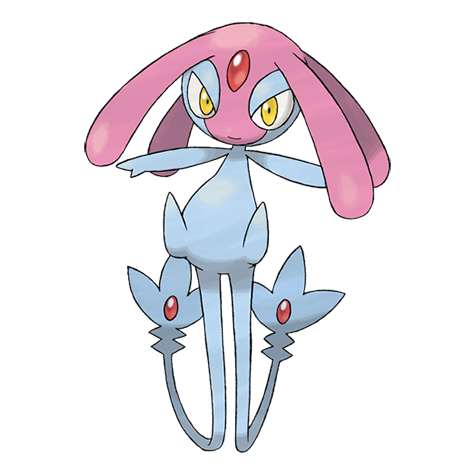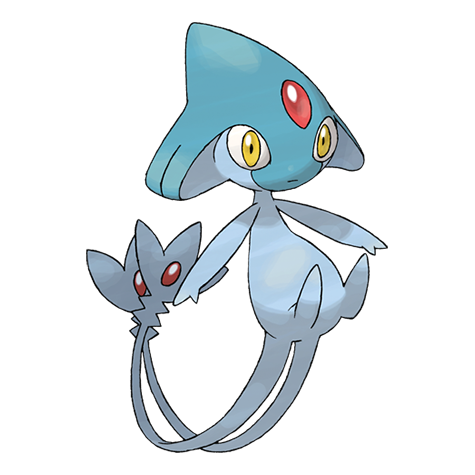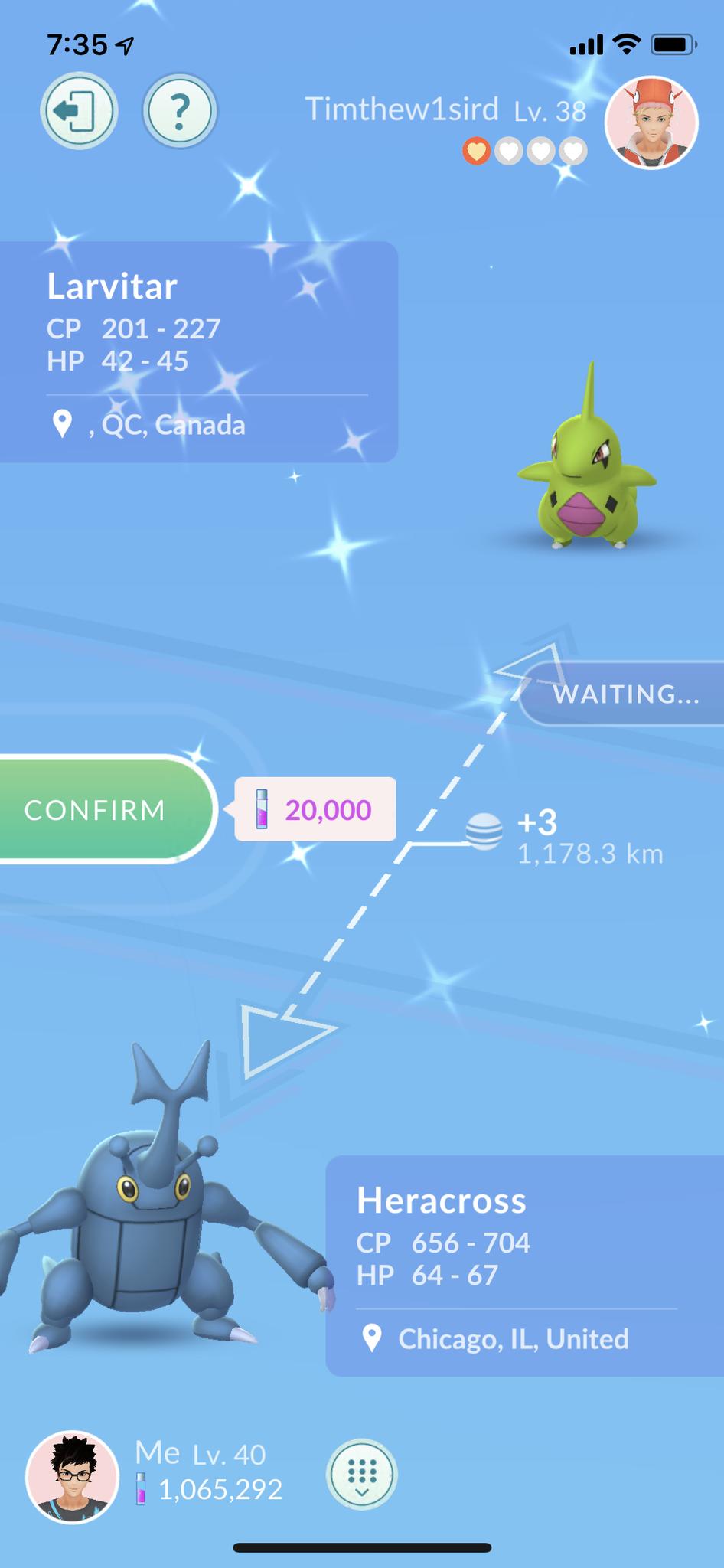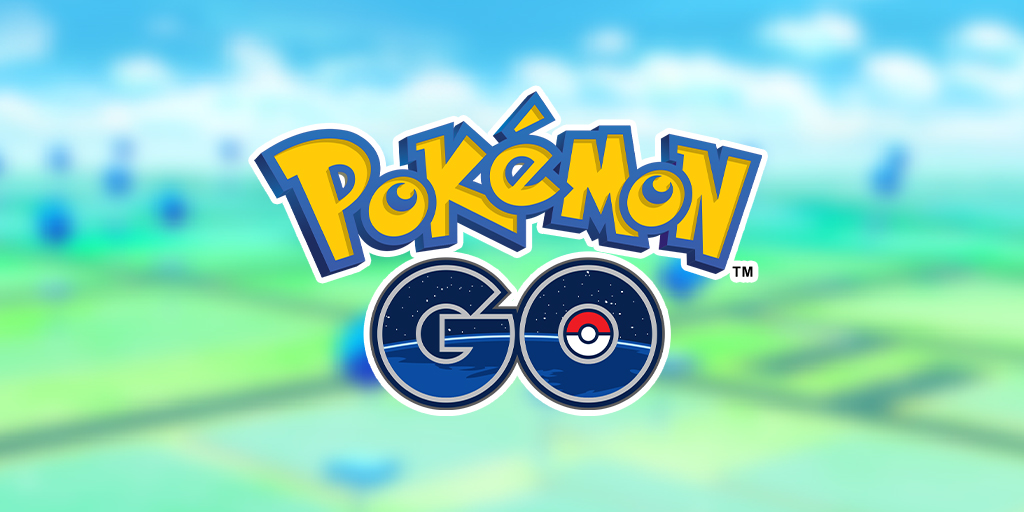Every Regional Exclusive Pokémon in Pokémon Go: Now with Bouffalant!
- aug
- 18
- Posted by Michael
- Posted in Okategoriserade
Where do you find and how do you catch Regional Pokémon like Bouffalant, Mr. Mime, Kangaskhan, and Farfetch'd?
From the very beginning, the goal of Pokémon Go has been to get you to get up and go. Around the neighborhood, sure, but also around the world. That's where regional exclusive Pokémon come in. Since Gen I, Pokémon Go has kept a handful of Pokémon exclusive to some regions, and with each new generation, they've increased the number of Pokémon and places.
Here's the updated list!
What are Regional Pokémon in Pokémon Go?
Pokémon Go is all about getting up and going, both walking and traveling. To help promote the traveling part, Pokémon Go makes some Pokémon only available in certain regions of the world. Sometimes it's a country or island, a subcontinent or continent or part thereof, or in one case, coastlines around the equator. Whatever the region is, you have to go there to find its exclusive Pokémon.
What are the current Regionals in Pokémon Go?
As of August 2020, there are nearly 40 Pokémon that can only be caught or hatched in specific parts of the world. While these Pokémon each have designated regions where they can be caught or hatched, there is the occasional overlap, as well as parts of regions that fall outside of the spawn areas. For example, the souther tip of Florida and Texas won't see the North American Regional Exclusive Tauros. Some Regional Exclusive Pokémon also swap regions periodically.
- Farfetch'd - East Asia
- Kangaskhan - Oceania
- Mr. Mime - Europe
- Tauros - North America
- Heracross - Central and South America
- Corsola - Tropical areas along the equator
- Illumise - Americas and Africa
- Volbeat - Europe, Asia, Oceania
- Torkoal - South Asia
- Zangoose - Europe, Asia, and Oceania
- Seviper - Americas and Africa
- Solrock - Eastern Hemisphere
- Lunatone - Western Hemisphere
- Relicanth - New Zealand and surrounding islands
- Tropius - Africa and surrounding areas
- Pachirisu - North-Arctic, including Canada, Russia, and Alaska
- Shellos (Pink) - Western Hemisphere
- Shellos (Blue) - Eastern Hemisphere
- Mime Jr. - Europe (5 KM eggs)
- Chatot - Southern Hemisphere
- Carnivine - Southeastern USA
- Uxie - Asia-Pacific
- Mesprit - Europe, Middle East, India, and Africa
- Azelf - Americas and Greenland
- Pansage - Asia-Pacific
- Pansear - Europe, Middle East, India, and Africa
- Panpour - Americas, Greenland
- Throh - Americas and Africa
- Sawk - Europe, Asia, and Australia
- Basculin (Red-Striped) - Eastern Hemisphere
- Basculin (Blue-Striped) - Western Hemisphere
- Maractus - Mexico, Central America, and South America
- Sigilyph - Egypt and Greece
- Bouffalant - New York and the surrounding areas
- Heatmor - Western Hemisphere
- Durant - Eastern Hemisphere
Bouffalant in Pokémon Go
The latest Regional Exclusive Pokémon to come to Pokémon Go is Bouffalant. Introduced during Unova Week Bouffalant was originally advertised as being available in New York City and the surrounding areas, because the Unova Region was loosely based on that area. However, players have reported Bouffalant sightings as far north as New Hampshire and as far south as Virginia. It would seem as though this bison-based Pokémon can be caught along the Mid-Atlantic and Northern coast of the United States.
Do Pokémon Go Regional Exclusives ever change region?
They do! There are currently a few pairs that have swapped regions since their introduction, such as Zangoose and Seviper. Likewise, there is a trio of Legendary Pokémon, Uxie, Mesprit, and Azelf, who swapped regions, giving Trainers a few weeks to attempt to catch each of them.
Additionally, Pokemon Go occasionally holds events where certain regional Pokemon are temporarily available in other regions, if not globally. This has now happened multiple times for the first generation regionals: Mr. Mime, Kangaskhan, Farfetch'd, and Tauros.
Have any Pokémon ever stopped being Regional and gone worldwide?
Plusle and Minun started off separate, like Zangoose and Seviper, but now both spawn globally. Rumor has it; the Pokémon Company told Niantic the two best buddies shouldn't be separated.
Do Regionals sometimes appear in other regions, like during events?
Yes. Sometimes Regional Exclusive Pokémon will be included in events. It's almost always at real-world events like Go Fest Chicago, and sometimes during in-game events. Some examples include:
- July 2018: Torkoal at Pokémon Go Fest in Chicago, U.S.A.
- June 2018: Corsola at Pokémon Go Safari Zone in Dortmund, Germany
- November 2017: Farfetch'd globally and Kangaskhan in parts of South East Asia.
- November 2017: Mr. Mime at Safari Zone in Tottori, Japan.
- August 2017: Mr. Mime at Pokémon Outbreak in Yokahama, Japan.
- August 2017: Kangaskhan at Safari Zone Europe and Pokémon World Championships in Anaheim, California
- July 2017: Heracross at Pokémon Go Fest in Chicago, U.S.A.
How do you catch Regionals in Pokémon Go?
You catch Regionals just like you catch any Pokémon in Pokémon Go but, if you have limited time or limited spawns, you're going to want to maximize your chances.
- ABC. Always be curving. Once you can nail Curve Ball every time, you'll get a 1.7x bonus every time.
- Max out your medals. Some are easier to get than others, but they consume no resources like Great or Ultra Balls or Razz Berries, so once you get them, that 1.1x to 1.3x is automatically applied each time.
- Consistency counts. Aim for the smallest target you can nail every time. If that's Nice, it's nice. If that's Great or Excellent, even better. But better the bonus you get then one you miss, and that extra 1.3 to 2x also doesn't consume resources and can make a difference.
- Razz for real. Use Razz Berries when you need to. Unlike Great or Ultra Balls, you can't miss with a Razz Berry, and its 1.5x bonus will last until you hit. For Golden Razz Berries, it's 2.5x!
- Bump them Balls. Use Great and Ultra Balls to maximize your odds. You get an extra 1.5x for a Great Ball and 2x for an Ultra Ball, so use them to get those super rare or hard to catch Pokémon.
For a complete explanation and many more details:
How to catch tough Pokémon in Pokémon Go
Trading for Regionals in Pokémon Go
If you just cannot afford to travel the globe in search of regionals, it is possible to trade with someone who has. Well, for a price. If the Regional is new to your Pokédex, it'll be considered a Special trade and cost both you and the person you're trading with a non-trivial amount of stardust. Here are the numbers:
- Friend: No Special Trades
- Good Friend: 20,000 Stardust
- Great Friend: 16,000 Stardust
- Ultra Friend: 1,600
- Best Friend: 800
There are restrictions on Trades based on Friendship level and location. This is, in part, to discourage people from selling Pokémon. While you can meet other players through Facebook, Discord, and Reddit, most players willing to trade Regional Exclusive Pokémon aren't going to ask for money or anything offline in return. If they do, it's probably a scam.
Any questions about Regional Pokémon in Pokémon Go?
If you have any questions about where to find or how to catch region exclusive Pokémon in Pokémon Go, leave them in the comments, and be sure to check out our many other Pokémon Go guides so you too can be a Pokémon Master!
Senaste inläggen
- New Apple Pencil report makes it sound like the PS5 controller – no, really
- Apple could be springing a big surprise with M4 chip debut on iPad Pro
- Apple has realized what the iPad’s best feature is after 14 years — and its Let Loose event will make it clear
- Mimestream, my favorite Mac email app, is getting an iOS version
- Apple-ID loggar ut användare och kräver lösenordsåterställning
Senaste kommentarer
Arkiv
- april 2024
- mars 2024
- februari 2024
- januari 2024
- december 2023
- november 2023
- oktober 2023
- september 2023
- augusti 2023
- juli 2023
- juni 2023
- maj 2023
- april 2023
- mars 2023
- februari 2023
- januari 2023
- december 2022
- november 2022
- oktober 2022
- september 2022
- augusti 2022
- juli 2022
- juni 2022
- maj 2022
- april 2022
- mars 2022
- februari 2022
- april 2021
- mars 2021
- januari 2021
- december 2020
- november 2020
- oktober 2020
- september 2020
- augusti 2020
- juli 2020
- juni 2020
- maj 2020
- april 2020
- mars 2020
- februari 2020
- januari 2020
- december 2019
- november 2019
- oktober 2019
- september 2019
- augusti 2019
- juli 2019
- juni 2019
- maj 2019
- april 2019
- mars 2019
- februari 2019
- januari 2019
- december 2018
- november 2018
- oktober 2018
- september 2018
- augusti 2018
- juli 2018
- juni 2018
- maj 2018
- april 2018
- mars 2018
- februari 2018
- januari 2018
- december 2017
- november 2017
- oktober 2017
- september 2017
- augusti 2017
- juli 2017
- juni 2017
- maj 2017
- april 2017
- mars 2017
- februari 2017
- januari 2017
- december 2016
- november 2016
- oktober 2016
- september 2016
- augusti 2016
- juli 2016
- juni 2016
- maj 2016
- april 2016
- mars 2016
- februari 2016
- januari 2016
- december 2015
- november 2015
- oktober 2015
- september 2015
- augusti 2015
- juli 2015
- juni 2015
- maj 2015
- april 2015
- mars 2015
- februari 2015
- januari 2015
- december 2014
- november 2014
- oktober 2014
- september 2014
- augusti 2014
- juli 2014
- juni 2014
- maj 2014
- april 2014
- mars 2014
- februari 2014
- januari 2014
Kategorier
- –> Publicera på PFA löp
- (PRODUCT) RED
- 2015
- 25PP
- 2nd gen
- 32gb
- 3D Touch
- 3D-kamera
- 4k
- 64gb
- 9to5mac
- A10
- A9X
- Aaron Sorkin
- Accessories
- adapter
- AirPlay
- AirPods
- Aktiv
- Aktivitetsarmband
- Aktuellt
- Alfred
- AMOLED
- Android Wear
- Angela Ahrendts
- Ångerätt
- announcements
- Ansiktsigenkänning
- app
- App Store
- Appar
- Apple
- Apple Beta Software Program
- Apple Book
- Apple CarPlay
- Apple Event
- Apple iMac
- Apple Mac Mini
- Apple Macbook
- Apple MacBook Air
- Apple MacBook Pro
- Apple Macos
- Apple Maps
- Apple Music
- Apple Music Festival
- Apple Music Radio
- Apple Offer
- Apple Online Store
- Apple Park
- Apple Pay
- Apple Pencil
- Apple Podcast
- Apple Store
- Apple Store 3.3
- Apple TV
- apple tv 4
- Apple TV 4K
- Apple Watch
- Apple Watch 2
- Apple Watch 8
- Apple Watch 9
- Apple Watch Apps
- Apple Watch SE
- Apple Watch Series 2
- Apple Watch Sport
- Apple Watch Ultra
- AppleCare
- AppleTV
- Application
- Applications
- Apps
- AppStore
- Apptillägg
- Apptips
- AppTV
- April
- Arbetsminne
- armband
- Art Apps
- Återköp
- återvinning
- Åtgärdsalternativ
- atvflash
- Audio Apps
- Augmented REality
- Back-to-school
- Bakgrundsbilder
- BankId
- Barn
- Batteri
- batteriskal
- batteritid
- Beats
- Beats 1
- Beats Solo 2 Wireless
- Beats Solo2
- Bebis
- Beginner Tips
- Belkin
- Bendgate
- beta
- Beta 3
- betaversion
- betaversioner
- bilddagboken.se
- bilder
- bilhållare
- billboard
- Bioteknik
- Blendtec
- Bloomberg
- Bloons TD 5
- Bluelounge
- Bluetooth
- Böj
- Booking.com
- Borderlinx
- bose
- bugg
- Buggar
- Buggfixar
- Butik
- C More
- Calc 2M
- Camera
- Campus 2
- Canal Digital
- Carpool Karaoke
- Caseual
- Catalyst
- CES 2015
- Chassit
- Chip
- Chrome Remote Desktop
- Chromecast
- citrix
- clic 360
- CNBC
- Connect
- Cydia
- Dagens app
- Dagens tips
- Damm
- Danny Boyle
- Data
- datamängd
- Datorer
- Datortillbehör
- Datum
- Defense
- Dekaler
- Designed by Apple in California
- Developer
- Development
- Digital Inn
- Digital Touch
- Digitalbox
- DigiTimes
- Direkt
- Discover
- display
- DisplayMate
- Dive
- Docka
- Dräger 3000
- Dropbox
- Droples
- DxOMark
- E-post
- earpod
- EarPods
- Earth Day
- Eddie Cue
- eddy cue
- Educational Apps
- Ekonomi
- Ekonomi/Bransch
- El Capitan
- Elements
- ElevationLab
- Elgato Eve
- Elgato Eve Energy
- EM 2016
- Emoji
- emojis
- emoticons
- Enligt
- EU
- event
- Eventrykten
- EverythingApplePro
- Faceshift
- facetime
- Fäste
- Featured
- Features
- Feng
- Film / Tv-serier
- Filmer
- Filstorlek
- Finance Apps
- Finder For AirPods
- Finland
- FireCore
- Fitbit
- Fitness Accessories
- Fjärrstyr
- Flurry
- Födelsedag
- fodral
- Förboka
- Force Touch
- förhandsboka
- Första intryck
- Forumtipset
- foto
- FoU (Forskning och Utveckling)
- Fource Touch
- Foxconn
- FPS Games
- Framtid
- Fre Power
- Frontpage
- Fullt
- Fuse Chicken
- Fyra
- Gadgets
- Gagatsvart
- Gamereactor
- Games
- Gaming
- Gaming Chairs
- Gästkrönika
- General
- Gigaset
- Gitarr
- Glas
- GM
- Google Maps
- Google Now
- gratis
- grattis
- Guide
- Guider
- Guider & listor
- Guld
- hack
- Halebop
- hållare
- Hälsa
- Hårdvara
- HBO
- HBO Nordic
- Health
- Health and Fitness
- Health and Fitness Apps
- Hej Siri
- Helvetica Neue
- Hemelektronik
- Hemknapp
- Hemlarm
- Hermes
- Hitta min iphone
- Hjärta
- högtalare
- HomeKit
- HomePod
- hörlurar
- htc
- Hue
- Humor
- i
- I Am A Witness
- IBM
- iBolt
- iBomber
- iBook
- icar
- iCloud
- iCloud Drive
- iCloud Voicemail
- iCloud.com
- iDevices
- IDG Play
- idownloadblog
- iFixit
- ikea
- iKörkort
- iLife
- Illusion Labs
- iMac
- IMAP
- iMessage
- iMessages
- iMore Show
- Incipio
- InFuse
- Inspelning
- Instagram-flöde
- Instrument
- Intel
- Internet/Webbtjänster
- iOS
- iOS 10
- iOS 12
- iOS 17
- iOS 18
- iOS 5
- iOS 7
- iOS 8
- iOS 8 beta
- iOS 8.1.3
- iOS 8.2
- iOS 8.3
- iOS 8.4
- iOS 8.4.1
- iOS 9
- iOS 9 beta 4
- iOS 9.1
- iOS 9.1 beta 2
- iOS 9.2
- iOS 9.2.1
- iOS 9.3
- IOS Games
- ios uppdatering
- ios9
- iPad
- iPad Accessories
- iPad Air
- iPad Air 2
- iPad Air 3
- iPad Apps
- iPad Mini
- iPad mini 4
- iPad Mini 6
- iPad mini retina
- iPad Pro
- iPados
- iphone
- iPhone 12
- iPhone 14
- iPhone 14 Pro
- iPhone 15
- iPhone 16
- iPhone 17
- iPhone 5
- iPhone 5S
- iPhone 5se
- iPhone 6
- iphone 6 plus
- iPhone 6c
- iPhone 6s
- iPhone 6S plus
- iPhone 7
- iPhone 7 display
- iPhone 7 Plus
- iPhone 7s
- iPhone Accessories
- iPhone Apps
- iPhone SE
- iphone x
- iPhone XS
- iPhone XS Max
- iPhone7
- iPhoneGuiden
- iPhoneguiden.se
- iPhones
- iPod
- iPod Nano
- iPod shuffle
- ipod touch
- iSight
- iTunes
- iWatch
- iWork
- iWork för iCloud beta
- Jailbreak
- James Corden
- Jämförande test
- Jämförelse
- Jet Black
- Jet White
- Jönssonligan
- Jony Ive
- Juice Pack
- Juridik
- Just mobile
- kalender
- kalkylator
- Kamera
- Kameratest
- Karriär/Utbildning
- Kartor
- Kevin Hart
- keynote
- Keynote 2016
- KGI
- KGI Security
- Kina
- Klassiskt läderspänne
- Kod
- Kollage
- koncept
- konceptbilder
- köpguide
- krasch
- Krascha iPhone
- Krönika
- Kvartalsrapport
- Laddhållare
- laddningsdocka
- Laddunderlägg
- läderloop
- lagar
- Lagring
- Lajka
- Länder
- lansering
- laserfokus
- Layout
- leather loop
- LG
- Liam
- Lifeproof
- Lightnigport
- lightning
- Linux
- LinX
- live
- Live GIF
- Live Photos
- Live-event
- Livsstil
- Ljud & Bild
- Logitech
- LOL
- Lösenkod
- Lösenkodlås
- Lovande spel
- LTE
- Luxe Edition
- M3
- M3TV
- Mac
- Mac App Store
- Mac Apps
- Mac Mini
- Mac OS
- Mac OS X
- Mac OS X (generellt)
- Mac OS X Snow Leopard
- Mac Pro
- Macbook
- Macbook Air
- Macbook Pro
- Macforum
- Macintosh
- macOS
- Macs
- MacWorld
- Made for Apple Watch
- magi
- Magic
- MagSafe
- Martin Hajek
- matematik
- Meddelanden
- Media Markt
- Medieproduktion
- Mediocre
- Messaging Apps
- Messenger
- MetaWatch
- Mfi
- Michael Fassbender
- microsoft
- Mikrofon
- Minecraft
- Ming-Chi Kuo
- miniräknare
- minne
- Mixer
- Mixning
- Mjukvara
- mobbning
- Mobile Content
- Mobilt
- Mobilt/Handdator/Laptop
- Mobiltelefon
- Mockup
- Mophie
- mors dag
- moto 360
- Motor
- MTV VMA
- multitasking
- Music
- Music Apps
- Music, Movies and TV
- Musik
- Musikmemon
- MW Expo 2008
- native union
- Nätverk
- Navigation Apps
- nedgradera
- Netatmo Welcome
- Netflix
- Netgear Arlo
- News
- Niantic
- Nike
- Nikkei
- Nintendo
- Nöje
- Norge
- Notis
- Notiscenter
- nya färger
- Nyfödd
- Nyheter
- Officeprogram
- Okategoriserade
- OLED
- omdöme
- Omsättning
- OS X
- OS X El Capitan
- OS X Mavericks
- OS X Yosemite
- Outlook
- Övrig mjukvara
- Övrigt
- PanGu
- papper
- patent
- PC
- pebble
- Pebble Smartwatch
- Pebble Steel
- Pebble Time
- Pebble Time Steel
- Persondatorer
- Petter Hegevall
- PewDiePie
- Philips
- Philips Hue
- Phones
- Photoshop
- Planet of the apps
- Plex
- Pluggar
- Plus
- Plusbox
- Podcast
- Podcast Apps
- Policy
- Porträttläge
- PP
- Pris
- priser
- problem
- Problems
- Productivity Apps
- Program
- Prylar & tillbehör
- Publik
- publik beta
- QuickTime
- räkenskapsår
- räkna
- ram
- RAM-minne
- Rapport/Undersökning/Trend
- Rea
- Reading Apps
- recension
- Red
- reklaamfilm
- reklam
- reklamfilm
- reklamfilmer
- rekord
- Rendering
- reparation
- Reportage
- Reptest
- ResearchKit
- Retro
- Review
- Ring
- Ringa
- Rocket Cars
- Rosa
- Rumors
- Rumours
- RunKeeper
- rykte
- Rykten
- Safir
- Säkerhet
- Säkerhetsbrist
- Samhälle/Politik
- samsung
- Samtal
- San Francisco
- SAP
- security
- Series 2
- Servrar
- Shigeru Miyamoto
- Sia
- Siri
- SJ Min resa
- skal
- Skal iPhone 6
- skal iPhone 6s
- skärm
- SKärmdump
- Skärmglas
- Skribent
- skribenter medarbetare
- Skriva ut
- skruvmejsel
- skydd
- Skyddsfilm
- Skype
- slice intelligence
- Smart
- smart hem
- Smart Home
- Smart Keyboard
- Smart klocka
- Smart Lights
- smartphone
- Smartwatch
- Snabbt
- Snapchat
- Social Apps
- Software
- Solo2
- sommar
- Sonos
- Sony
- soundtouch
- Space Marshals
- spår
- Speakers
- Special Event
- Spel
- Spelkonsol
- Spellistor
- Split Screen
- Split View
- Sport
- Sportband
- Sports Apps
- spotify
- Spring forward
- Statistik
- Steve Jobs
- Stickers
- Stockholm
- Stor iPhone
- Storlek
- Story Mode
- Strategy Games
- streama
- Streaming
- stresstest
- Ström
- Studentrabatt
- stylus
- Super Mario Run
- support
- Surf
- Surfplatta
- svenska
- sverige
- Sverigelansering
- Switch
- Systemstatus
- Systemutveckling
- tåg
- Taig
- Tangentbord
- Taptic Engine
- Tårta
- tät
- Tävling
- Taylor Swift
- Teknik
- tele 2
- Telefoner
- Telekom
- Telia
- Test
- Tid
- TikTok
- Tile
- tillbehör
- Tim Cook
- TIME
- TimeStand
- Tiny Umbrella
- Tips
- Toppnyhet IDG.se
- Touch ID
- TouchID
- tower defence
- trådlös laddning
- Trådlösa hörlurar
- trådlöst
- trailer
- Travel Apps
- Tre
- TrendForce
- TripAdvisor
- Trolleri
- trump
- TSMC
- Tum
- tv
- tvätta
- tvOS
- tvOS 9.2
- tvOS beta 2
- Tweak
- Typsnitt
- Ubytesprogram
- UE MegaBoom
- Unboxing
- Underhållning/Spel
- unidays
- United Daily News
- Unix
- Updates
- Uppdatera
- uppdatering
- Upplösning
- upptäckt
- USA
- Ut på Twitter
- utbyte
- utbytesprogram
- Utilities Apps
- Utlottning
- utrymme
- utvecklare
- varumärke
- Vatten
- Vattentålig
- vattentät
- vävt nylon
- Verktyg
- Viaplay
- Vibrator
- video
- Videoartiklar och webb-tv (M3/TW/CS)
- Villkor
- viloknapp
- Virtual Reality
- Virus
- visa
- Vision Pro
- VLC
- Volvo on call
- W1
- Waitrose
- Watch OS
- WatchOS
- WatchOS 2
- watchOS 2.0.1
- watchOS 2.2
- Webbtv (AppTV)
- wi-fi
- Wifi-samtal
- Windows
- Windows 8
- WWDC
- WWDC2015
- yalu
- Youtube
- Zlatan

